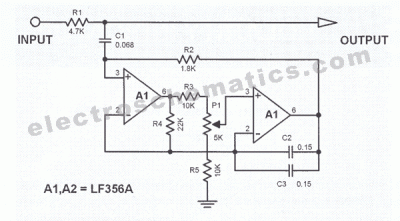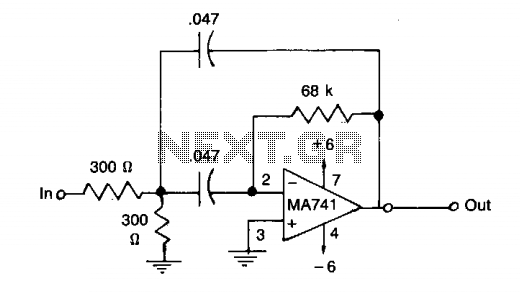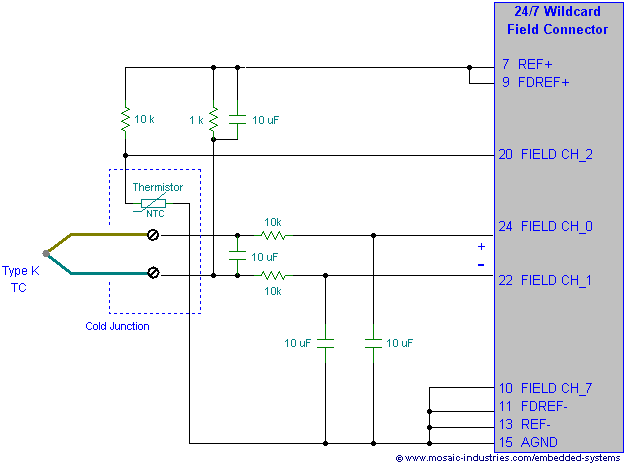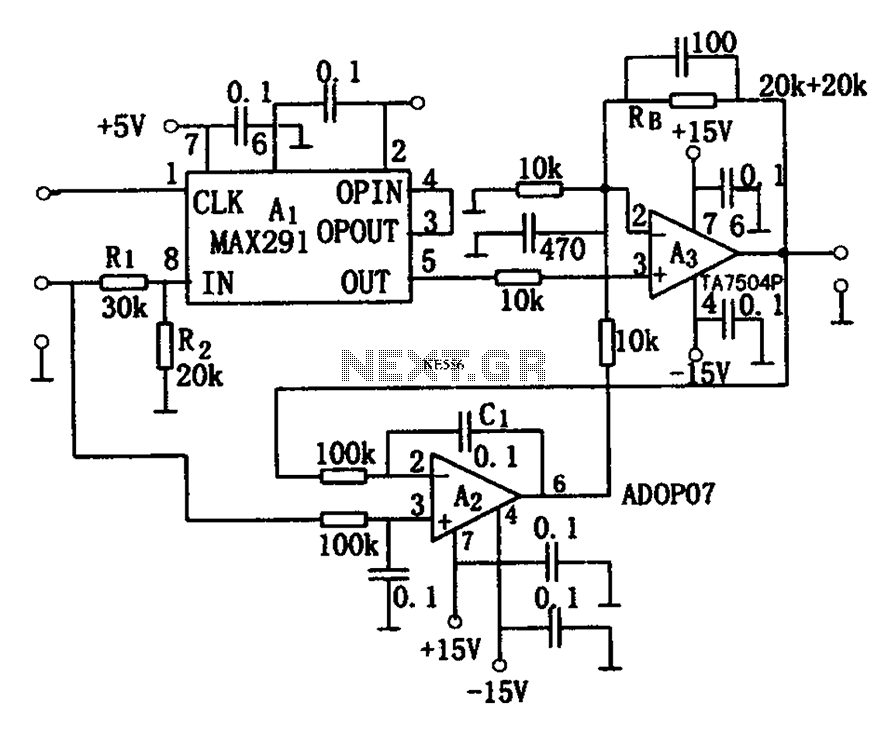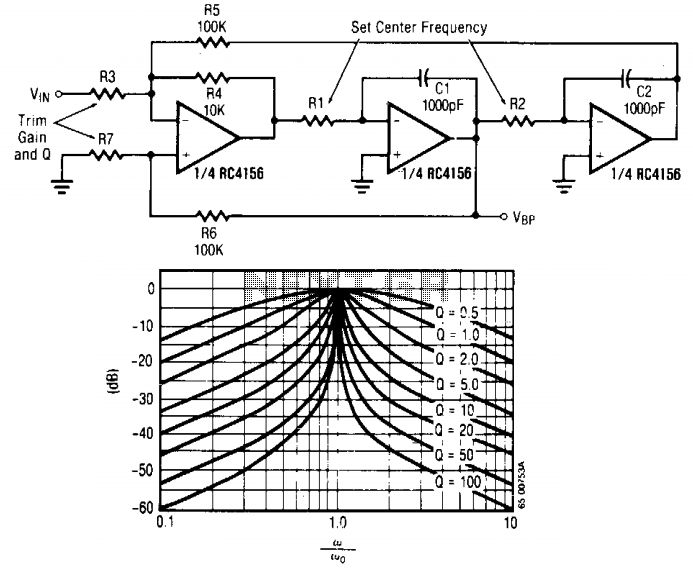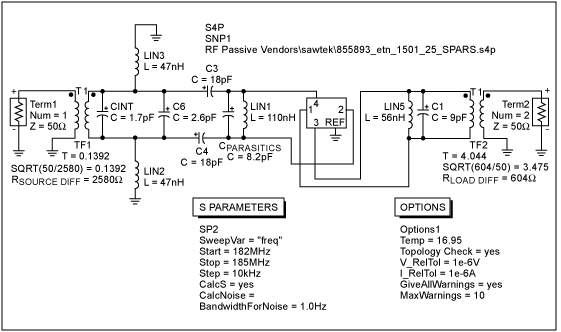
Wideband two-pole high-pass filter
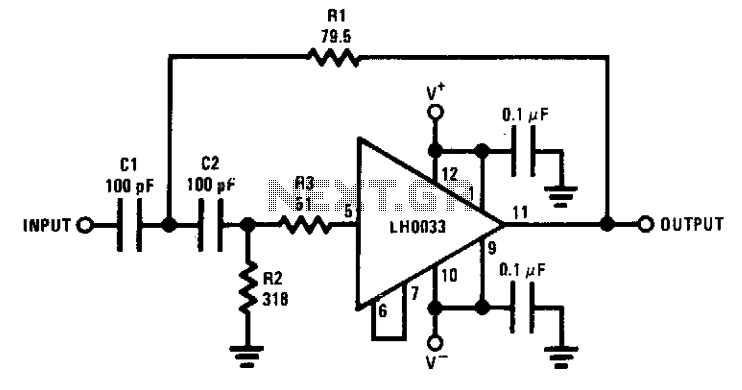
The circuit features a cutoff frequency of 10 MHz. Resistor R3 is utilized to prevent the input capacitance of the amplifier from affecting the filter response at the desired frequency. An equivalent low-pass filter can also be derived through the transformation of capacitance and resistance.
The circuit is designed to implement a low-pass filter with a cutoff frequency of 10 MHz, which is critical for applications requiring signal conditioning and noise reduction. The primary function of the filter is to allow signals below this frequency to pass while attenuating higher frequency signals, thus ensuring the integrity of the desired signal.
Resistor R3 plays a pivotal role in the circuit by isolating the input capacitance of the amplifier from the filter's response. This isolation is crucial because any interaction between the amplifier's input capacitance and the filter could lead to unintended alterations in the filter's frequency response, potentially degrading the performance of the circuit. By carefully selecting the value of R3, the designer can ensure that the input capacitance does not introduce phase shifts or amplitude variations at the cutoff frequency.
The equivalent low-pass filter configuration can be achieved through the transformation of capacitance and resistance. This method allows for the design of filters with specific characteristics by altering the values of the components in the circuit. In practice, this means that a designer can tailor the filter's performance to meet specific application needs by adjusting the resistance and capacitance values accordingly.
Overall, the described circuit is a well-considered design that effectively utilizes resistor R3 to maintain filter integrity while providing the necessary low-pass filtering characteristics for signals in the 10 MHz range. The ability to transform component values further enhances the flexibility and adaptability of the circuit in various electronic applications.The circuit provides a 10MHz cutoff frequency. Resistor R3 ensures that the input capacitance of the amplifier does not interact with the filter response at the frequency of interest. An equivalent low pass filter is similarly obtained by capacitance and resistance transformation. 🔗 External reference
The circuit is designed to implement a low-pass filter with a cutoff frequency of 10 MHz, which is critical for applications requiring signal conditioning and noise reduction. The primary function of the filter is to allow signals below this frequency to pass while attenuating higher frequency signals, thus ensuring the integrity of the desired signal.
Resistor R3 plays a pivotal role in the circuit by isolating the input capacitance of the amplifier from the filter's response. This isolation is crucial because any interaction between the amplifier's input capacitance and the filter could lead to unintended alterations in the filter's frequency response, potentially degrading the performance of the circuit. By carefully selecting the value of R3, the designer can ensure that the input capacitance does not introduce phase shifts or amplitude variations at the cutoff frequency.
The equivalent low-pass filter configuration can be achieved through the transformation of capacitance and resistance. This method allows for the design of filters with specific characteristics by altering the values of the components in the circuit. In practice, this means that a designer can tailor the filter's performance to meet specific application needs by adjusting the resistance and capacitance values accordingly.
Overall, the described circuit is a well-considered design that effectively utilizes resistor R3 to maintain filter integrity while providing the necessary low-pass filtering characteristics for signals in the 10 MHz range. The ability to transform component values further enhances the flexibility and adaptability of the circuit in various electronic applications.The circuit provides a 10MHz cutoff frequency. Resistor R3 ensures that the input capacitance of the amplifier does not interact with the filter response at the frequency of interest. An equivalent low pass filter is similarly obtained by capacitance and resistance transformation. 🔗 External reference
